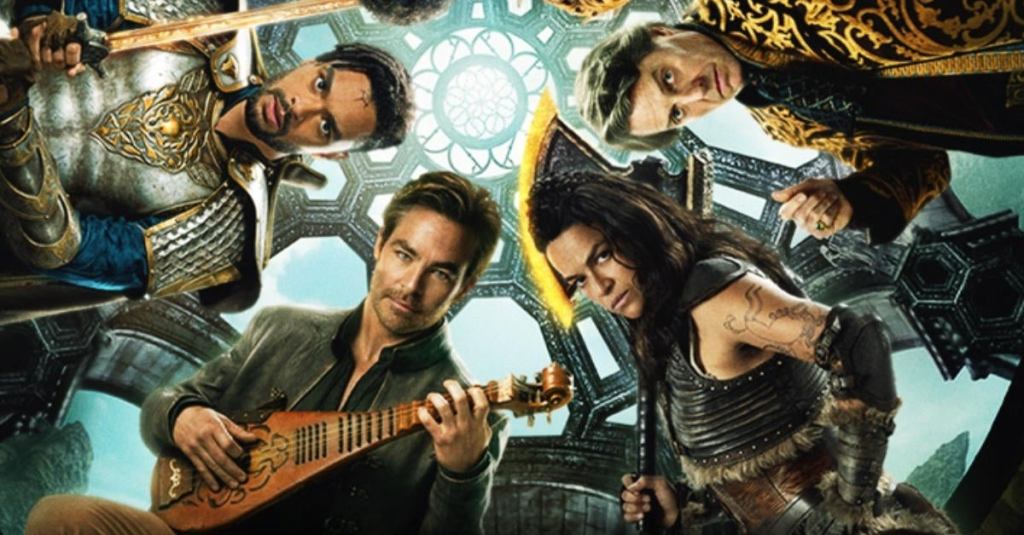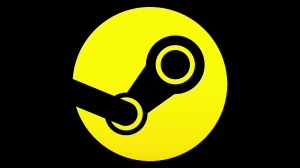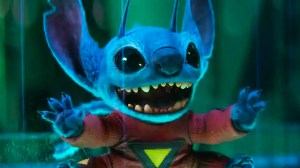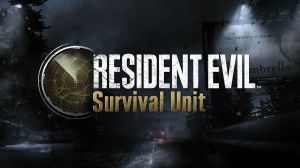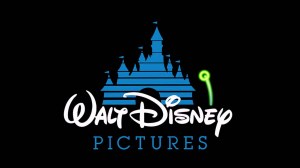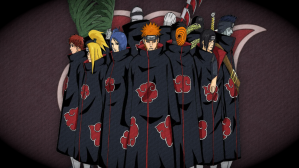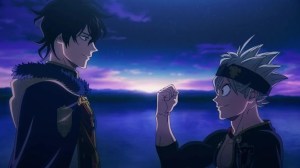We asked the producer of Dungeons & Dragons: Honor Among Thieves about all your burning questions from the film. Earlier in the week, ComicBook.com sat down with Jeremy Latcham, the producer of Dungeons & Dragons: Honor Among Thieves, to chat about his newest film. Latcham was a producer on many of the early Marvel Studios films and helped guide Dungeons & Dragons: Honor Among Thieves from script all the way to the finished project. If you want to know why the movie wasn’t made with a sequel in mind, or what characters were cut from the film, or how they made a dragon chase both hilarious and terrifying, we’ve got all your answers below:
Videos by ComicBook.com

ComicBook.com: You produced a lot of the early Marvel movies and I know eOne and Hasbro are hoping that this is the first in a franchise. So how did the making of Dungeons & Dragons: Honor Among Thieves compare to the making of some of those early Marvel movies?
Jeremy Latcham: It’s very similar in terms of approach to some of the early Marvel stuff, insomuch that I took a real hard line from the outset that we were not going to get into universe planning or trying to start figuring out how to seed in things for sequels or set up things for future films. Instead, we said we have to really focus on making one good movie. That was the rule at Marvel, especially back in 2007 when we were making Iron Man and Incredible Hulk. We didn’t really spend any time planning ahead. We said, we’re just going to make one good film, and that’s our only goal, because there’s no franchise if you don’t make a good first movie, if you don’t make just a film that is liked by audiences.
So I really tried to tamp down any speculation from the studios on like if we could set something up or could seed something in. I said, “Guys, no one cares about this movie yet. We have to give them a reason to care, and that means we have to give a complete, full experience from top to bottom. That’s three acts of a movie that is compelling, full of characters they can fall in love with, and a world that they find intriguing. And then maybe if we’re so lucky, we can go from there.” But I really wanted to avoid the pitfalls of the Hollywood post-Marvel success where everyone is now planning a franchise and planning a world and planning a universe.
And so I really said, “Let’s just focus on making a good movie, and see if we can make something that delights people.” And I think that was a really great guiding principle for us, because it just allowed us just to make this movie good. And I’m really proud of the film and I think the world’s really rich and really intriguing and a place that I would love to visit again. And I think the characters are the kind of characters that I’d like to hang out with in the future. But it was all done under the lens of, let’s just make this one good, so that there’s a reason to care. Because that’s what movies used to be.
When they made Indiana Jones, it was not with the whole plan to make a billion of them. They made one movie, and it was great. And I think that’s where the best stuff has come from. You’ve always had ambitions, but you can’t just do this thing where you have cliffhangers everywhere and setups that don’t go anywhere, and men in weird fedoras walking through that are supposed to mean something to three people. It’s just silliness. And so I said, “Let’s just really focus on making a good movie.”

Were there any restrictions that you were given from Hasbro or from Wizards of the Coast?
Latcham: Not really, no. I would say there were certain things that we would ask if we could do, and they didn’t make sense from a lore standpoint. Like, “We don’t think that this particular creature or monster would be in this particular town, based on how the map works, and so you guys are going to have to figure out a way to justify that if you want to do it, or consider setting it in a different town, or consider setting it in a different spot on the map.” And so there were rules in so much that, if we’re going to go here, how do we make the world consistent with what fans would expect from the map and the lore that exists?
The only thing that we didn’t get to do that we really wanted to was when Xenk meets the dragonborn in the fishing village. In the script we had originally had a grippli, which is this type of frog person, and we couldn’t afford it. We just did not have the money to spend on a grippli puppet from Legacy, which was going to be probably $100,000, for literally a one-line joke that seemed silly at best. Because Xenk just walks up and says, “Jenkli, my boy.” And he says, “Jenkli to you, good sir.”
And it was like, can we really justify building a full on grippli boy with puppeteers and animatronics and motion capture? And we thought that might be, from a financial standpoint, a step too far.
We had another gag with a tortle that we wanted to do. When they steal the horses at the beginning of the film, we wanted a tortle to slowly chase them at very, very slow pace for a very long time. And it was probably going to get cut anyways, because it was such a silly joke. We’re trying to build momentum in the movie, and now there’s like this slow motion tortle chase. It just seemed absurd. And I don’t know that tortles ride horses. So it all just seemed a bit silly. But that was mostly cut for budget.
So Wizards were not the kind of folks that were really prescriptive or restrictive. They were really pleasant to work with. And as we had ideas for the film, they would say, “Let’s do some research and give you a whole pallet of stuff that you could choose from that would fit what you’re trying to accomplish.”
Let’s talk about the animatronics. Who made the decision to go so hard in on practical effects?
Latcham: It’s one of the most fun parts of the film, I think. John [Francis Daley] and Jonathan [Goldstein] from a very early stage said, “We want to make it real.”
I had really great success on Iron Man 1 with making everything real. There are only 820 visual effects shots in Iron Man, the movie is 90% practical. And it all came out of Favreau saying “plausibility” was key to the film. One of the first things I did on Iron Man, as the associate producer as a 25 year old, was I had this giant sign printed above Jon’s office door that said “plausibility.” And everything that you walked into his office with had to be plausible. It had to make sense how it could happen in the real world, or else he didn’t want to hear it. He didn’t want any CG tomfoolery, didn’t want any fake cameras, he didn’t want anything that wasn’t grounded and real. And I watched that process as a young producer, and I was like, “Man, the outcome was a movie that feels really real, and it feels like a really great, grounded way into this Marvel Universe.”
When John and Jonathan said to me, “What do you think about doing a bunch of practical effects?” I was all for it. I said, “Dude, let me call Shane Mahan right now at Legacy, and let’s get on it. I’m all for it. I had great success with Iron Man being a very practical driven film, and it made the universe feel real and lived-in, and I think we should do that here. Why not?” We all had this notion of trying to harken back to that ’80s aesthetic of real, tangible filmmaking, and we really wanted to get in that lane and make stuff that felt real.
It was a really good process, because right from the outset, I agreed, John and Jonathan agreed, and the studio was very game. Both studios were like, “Will it save money on visual effects?” And we’re like, “Yeah, sure. It’ll save a ton of money on visual effects, we promise.” Not really, ultimately. For every dollar you spend in practical effects, there’s some savings over the cost of the shots, but the setup is so expensive that it’s probably a wash at best. And then you have to do enhancement work to it anyways.
For instance, the giant fish that Xenk pulls the tabaxi out of – the fish was practical, the tabaxi was practical, and then the other tabaxi mom that was holding the tabaxi baby is also practical. And so in that one shot, that one little scene, there are three different kinds of creatures working. There’s baby tabaxi, giant fish, and then full size human tabaxi, all with their own challenges, all with their own unique things.
When we did the extension work to the set, I think people don’t notice it because of the practical effects. Because in that scene, the set was greatly extended. The village was built, rocks were built, the water was made digital. It was a lot of effects work happening around that stuff, but because the stuff you’re looking at feels so real, it helps the magic trick of the filmmaking where you don’t know what’s real and what’s not real. You’re not sure where the line is. I can imagine people going to Northern Ireland trying to find that fishing village and visit it, because it was so distinctive looking and cool, and being very disappointed that those rock features are not there. The rocks were what was fake. Everything else in the scene was real, but the giant rocks that were fake.
Part of what’s really fun about this kind of filmmaking that we can do now in this age, where practical effects are so cutting edge and visual effects are so cutting edge, is you can trick the audience. They don’t know what’s real or not, and they just end up feeling like it’s all real, hopefully, if you do your job right.
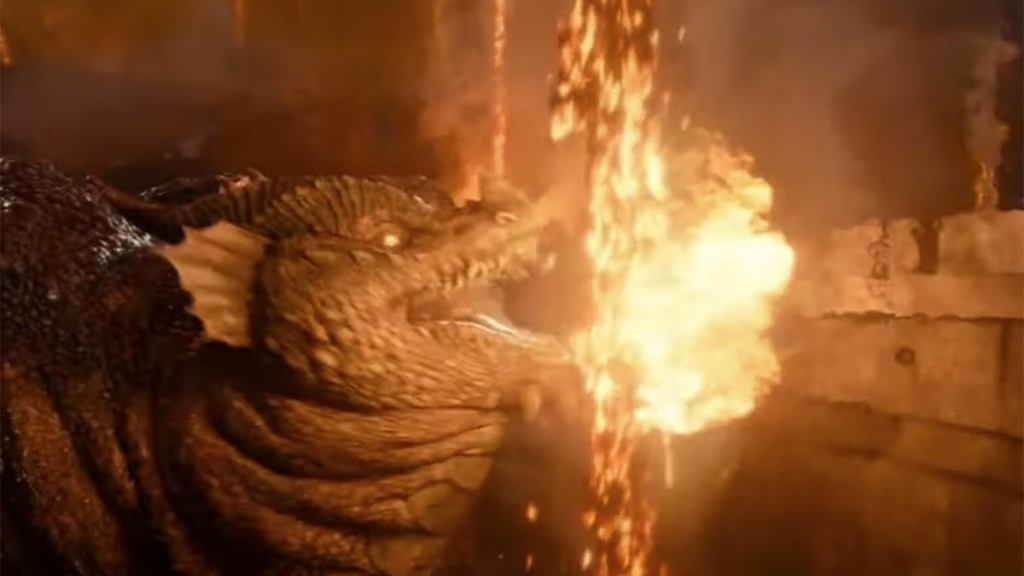
Speaker 1:
So let’s talk a little bit about Themberchaud, who’s my favorite part of the movie, bar none. How did you decide on that particular character and how did you balance the chaotic energy of that scene with the terror of being a dragon? Because that scene really captured the energy of D&D more than any other scene. It was so chaotic, and yet you didn’t demean the dragon at all. You felt that that dragon could literally kill all five of the characters, if only he could get his pudgy little claws on them.
Latcham: That was a real collaboration with Wizards, because they were very concerned that we were making a dragon that was ridiculous. And we kept saying, “No, he’s terrifying, he’s also ridiculous.” We boarded the sequence really early on with a board artist named Dave Krentz, who I know from Marvel, he had done the prison escape in Guardians of the Galaxy, I believe. He’s an incredible board artist. And we were working on the model at the same time, and we were going back and forth with Wizards, and we kept sending over more and more ridiculous imagery of really obese dachshunds as examples of what we wanted the dragon to feel like – these really chubby dachshunds that have trouble getting around because they’re so big, because humans have just fed them pet food for years, and they’ve really become gluttons, these little poor guys.
Wizards seemed cool with making the dragon ridiculous as long as we kept the features of the red dragon from the lore intact. Which I thought made sense, as long as we paid tribute to and made sure it was clearly a red dragon as written prescriptively in the lore. So we had tons of diagrams and drawings from Wizards, and tons of sketches from them over the years. And it helped also that Themberchaud was a real dragon. He’s based in the lore of Dungeons & Dragons. There is a gluttonous red dragon named Themberchaud who is gluttonous.
It was a real balancing act to try to get the tone right. And I always knew that, if nailed appropriately and if our actors played it straight, that the audience would have a blast. Because you could feel the terror of our actors coming through – it’s a real sequence, it’s not a spoof, there’s real stakes, they really could die. Doric is really smart when she tells Simon to fire the portal staff and get them out of there because they’re coming to a dead end, and they’re going to get eaten by the thing, and you feel them barely skip past its jaws. And so we played it all for real, but the dragon was just a bit absurd, and I think the end result is that it’s a really fun sequence and really unique. We’ve all seen dragon sequences in movies before. There’s nothing new there to have a dragon chase. It doesn’t feel groundbreaking. But this felt groundbreaking because of the elements that we added.
The only thing I’m bummed about is my favorite joke in the movie got cut by the studio is in that sequence. They felt like we were veering too far into a joke. When I look at the final cut of the film, I feel like the joke would’ve landed and people would’ve loved it. The joke was, in the wide shot when Themberchaud is flapping its little itty-bitty wings trying to get back up to the bridge, Edgin says to Xenk, “He looks like a chicken.” And then you cut wide and you see these itty-bitty wings flapping, and you know how a chicken tries to fly, it’s hilarious. It was a great little moment. And then as Edgin is sliding down the ramp towards the mouth of the dragon, Edgin said, “He’s not like a chicken!” as he almost gets eaten by the thing. And it was a great moment, but everyone felt like it just was hurting the stakes of the sequence.
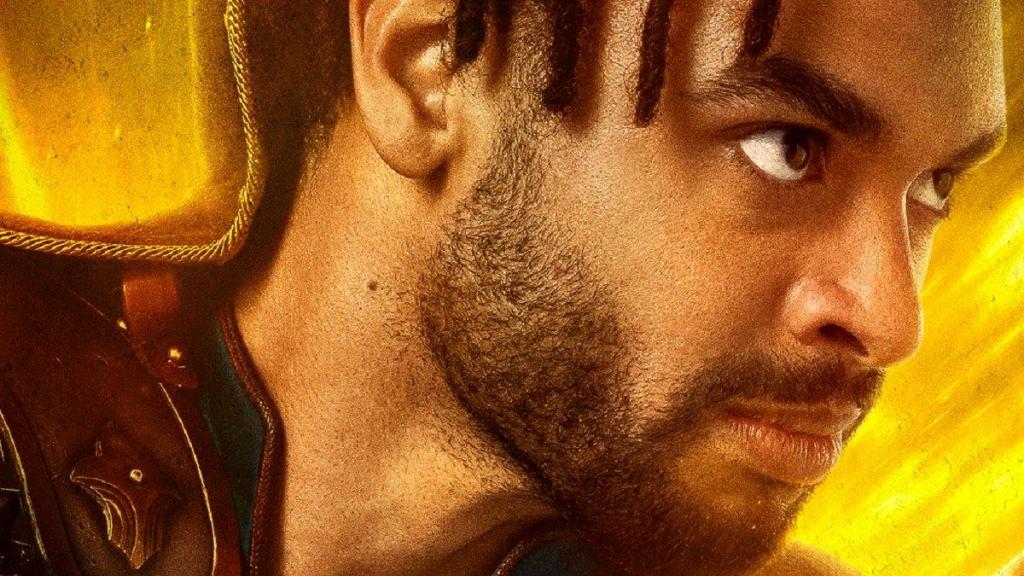
Regarding Xenk, was there any consideration to actually having him stick through to the end of the film? Was it always intended that he was going to be a one-act character?
Latcham: Always intended to be a one act character. I think the guys had this sense that it would be fun if this dude just blows in from a fantasy movie that’s taking place around the corner – imagine Peter Jackson’s making a fantasy film around the corner and one of his heroes wanders into our movie – and is stoic and serious and confident and heroic and super handsome, with real armor and real sword and really competent at everything he does, and is a true fantasy hero. We thought it’d be fun to have that blow into our movie for an act, and change our characters and give them some real information and move the story forward, but then leave. And we liked the juxtaposition of that guy with our band of knuckleheads who are just not as good at being heroes.
One of my favorite moments in the film is when Simon says, “Can’t you do it? Because you’re really good at fighting and strategy and doing everything.” And then Edgin says, “Yeah, everything but talking. Talking to you is not great.” It’s a lot of fun seeing that juxtaposition where this guy who’s really a real hero that you would expect the movie to be full of guys like that, and he just shows up for an act. So we never really intended him to come back. The journey of our film is watching our guys become heroes, and if Xenk shows up again, our guys never have to rise to the occasion.
It was more important from a storytelling standpoint to see our guys rise to the occasion and really become a team. And when the four of them are fighting Sofina right there in that plaza, and it’s reminiscent of that Avengers shot where we’re circling around and feeling the energy and heroics of our guys finally gelling, it’s really triumphant. If we’d had Xenk show up, it would’ve robbed us of that moment of heroism and level-up-ness for our guys.
So speaking of the Red Wizards, about Sofina, how early did you settle on the Red Wizards as the bad guys? And why did you settle on the Red Wizards? They’re obviously an iconic villain from the Forgotten Realms, but they’re not iconic compared to beholders or dragons.
Latcham: We wanted a humanoid villain that we could interact with and have dialogue with, and it could be part of the story, as opposed to just a big threat. And we also wanted something that felt on par with our gang. If you go too big too early, it messes stuff up. There’s a reason why Tony Stark fights Iron Monger in the first Iron Man, and why Peter Parker fights the Vulture in Spider-Man: Homecoming It’s about meeting your heroes where they’re at, and finding a villain that can track with them at the level of storytelling that they’re at. To blow in with something so crazy and weird like a beholder in a first movie, you’re probably just going to lose people.
It’s all about world building. To go back to the sequel discussion, you can lose people if you try to put everything that exists in the lore in a movie. It becomes overwhelming, it becomes hard to ground yourself in the film or the world. So, the Red Wizards feel the right level of baddie for our heroes, and it feels like the right level of threat for our guys to team up against.
I’m trying to remember if there was ever a draft that didn’t have a Red Wizard in it. There was a very, very early draft where Forge was the only villain, but it just felt like the movie didn’t have enough stakes if they just make off with his money. And then we ended up doing additional photography, we added the whole backstory that Xenk tells with the Red Wizards. Darrin Denlinger boarded that late, and we shot that in post to try to shore up the bad guy plot a little bit and give it a little more gravitas.
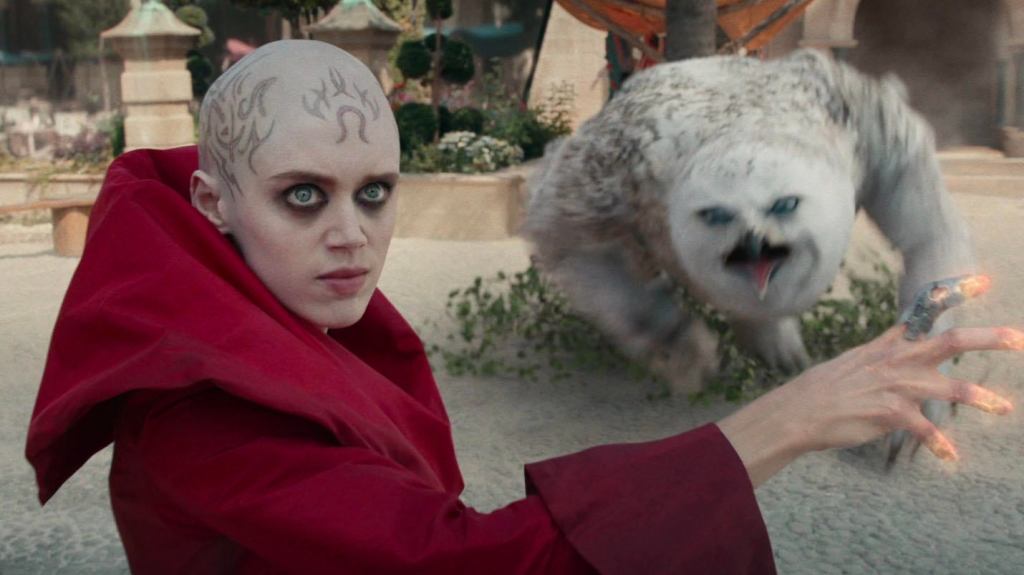
Speaking of that sequence, what exactly is the tie between Xenk and Szass Tam? Because there’s all sorts of theories out there about that. Or is that one of those vagaries where it’s like, he’s been around for a century, and we’ll save it for the sequel sort of thing, to figure that one out?
Latcham: We just wanted to have a kid that could represent that all Thayans weren’t bad. One of the things that the lore does sometimes is they just say, “This race is bad.” And we didn’t love that concept. So we liked the idea of having Xenk as almost a half-Thayan…like we wanted him to be half-dead, which is not really a thing in the lore. So we wondered how do we skirt around this and say he escaped the procedure, but not fully untouched? And he’s got Thayan in him, and he’s been through this beckoning death spell, but he survived it. That’s why he’s got the sigil burned into his forehead, but he was not possessed entirely by the spell.
We thought that was a fun measure to give Edgin some more attention with him. We really wanted it to be the case that Edgin did not like the guy. And we’re like, who does Edgin hate? He hates Thayans, he hates Harpers. So what if we have a guy who’s like half-Thayan and he’s also working with the Harpers, and he’s also ridiculously handsome, and he’s also ridiculously noble, and he’s also ridiculously moral and right and righteous? Just pile up on the guy, so that Edgin just really does not like him. And we thought that’d be a fun way to kick off their relationship.
Are there any Easter eggs that people have missed?
Latcham: I don’t think so. I’ve seen most everything discussed in one way or another on Twitter or TikTok or Instagram at this point, or in the Reddit thread. I’m trying to think if there’s anything that people may have missed…. There’s a mimic that makes its appearance when we first go to meet Xenk in the town, it’s an oyster with the mimic tongue as they go by that big truck full of weird shells. I don’t know if I’ve seen that mentioned anywhere. You see it, it licks its lips as it rides by in the back of that cart. So that’s a little bit of an Easter egg. I’m trying to think if there’s any other Easter eggs that are around that have not been discussed. The city that we see right before the intellect devourer joke, that was intended to be Menzoberranzan.
Oh, really?
Yeah. That was the original intention. I don’t know if we actually ended up leaving it that on the map, but when we designed it originally, that was going to be Menzoberranzan. There was some controversy about it based on where we were with Dolblunde, which was kind of a made-up place.
At one point in time, you considered using Drizzt in the movie. What would that have looked like?
Latcham: The original plan was for the Xenk character to be Drizzt. Wizards had wanted us to add Drizzt, as I recall. And so the guys created the Xenk role and had written it as Drizzt, originally. And then there was some controversy around Drizzt, and thought we might not want to be in middle of that controversy. So we wanted to take Drizzt out of the movie, but we had fallen in love with this idea of a character that shows up for an act. So we refined it and made Xenk. And then the guys wrote up this Xenk backstory, and then we dovetailed that into the villain story, and then they came back with a draft that had Xenk in it, and everyone was happy. So that was the evolution there.
It was certainly discussed to be Drizzt at one point, but it just seemed like there was probably a lot of baggage and a lot of expectation that would come with it, and a lot of questions. And ultimately it seemed like not the right move for the first movie.
Dungeons & Dragons: Honor Among Thieves is out in theaters now.

